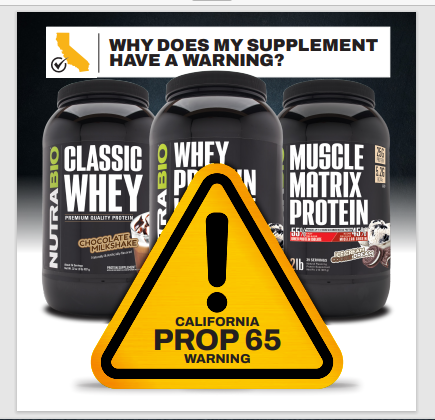Research suggests vitamin D supplementation may benefit endurance athletes
Low vitamin D levels are pretty common. People who spend much of their time indoors, like office workers, as well as vegans and people with milk allergies are the most susceptible to deficiency.
One study suggested that people living about 35 degrees latitude (southern border of Tennessee and Nevada) are deficient for at least a few months a year. (Schleicher, et al.)
How many people are Vitamin D deficient?
Worldwide, it’s estimated that about 1 billion people have low vitamin D levels. In the US, studies vary on results, from 42% deficient to 14%. While many people are not dangerously (or even noticeably) deficient, they may not have optimal levels either.
The recommended daily intake (RDI) of vitamin D is around 400-800 IU, although many experts argue this isn’t sufficient.
The safe upper limit was recently increased to 4,000 IU, but could be closer to 10,000 IU. Examine recommends supplementing a 1,000-2,000 IU dose. (Forrest, et al.) (Kimlin, et al.) (Patel, Kamal)
What is vitamin D?

Vitamin D is a fat-soluble nutrient that our skin synthesizes when exposed to sunlight or is digested through our diet.
Vitamin D supplementation is associated with a huge range of benefits, like increased cognition, immune health, bone health, and mood.
It can even reduce the risk of cancer, heart disease, diabetes, and multiple sclerosis
We’ve known about the connection between vitamin D and the muscular system for a while. Deficiency can cause aching muscles and muscle weakness, particularly in the elderly. But results from research studying the efficacy of supplementation on muscle recovery and strength have been mixed.
According to a meta-analysis on vitamin and muscle function, 7 studies showed a positive effect of vitamin D treatment on muscle strength and physical performance, while 9 studies found no evidence of effectiveness.
Similarly, the result of vitamin D on muscle strength and physical performance has been equally split. (Rejnmark, et al.)
Clearly, more research needs to be conducted on vitamin D’s role in muscle function and recovery. What’s more, very little research has been conducted on vitamin D and athletic performance, especially in young adults, which makes a new study by Zebrowska, et al. particularly interesting.
The latest research on Vitamin D and muscle function in runners

A 2020 study recently examined the effects of vitamin D supplementation on athletic performance in endurance runners.
The double-blind, placebo-controlled study looked at the amount of 25-hydroxyvitamin D (25(OH)D) in the blood, which is a good indicator of how much vitamin D is in the body.
It cross-referenced that data with skeletal muscle biomarkers like troponin, myoglobin, creatine kinase, and lactic dehydrogenase, which indicate exercise-induced muscle damage.
Twenty-four runners competing in an ultra-marathon were randomly assigned one or two groups which either ingested placebo or 2,000 IU vitamin D for three weeks. Serum levels and biomarkers were examined before and after the event.
As expected, researchers found significant differences between pre- and post-exercise markers of serum vitamin D in the vitamin D group, with baseline 25(OH)D levels observed at 34.9 ± 4.7 versus 40.3 ± 4.9 ng/ml, p = 0.02 in the supplemented group.
Here’s the exciting part: The vitamin D group also saw a decrease in the markers of muscle damage, with a decrease in troponin, myoglobin concentration, and creatine kinase. (Zebrowska, et al.)
Recommended vitamin D supplementation before long events

So, what does that all mean?
While more research is needed, the findings of Zebrowska, et a. suggest that supplementation of 2,000 UI for three weeks before a large event, like an ultra-marathon, might prevent skeletal muscle injuries (like muscle pain in the calf or hamstring) following extreme exercise.
Vitamin D supplementation could be an inexpensive, easy way to prevent injury and dramatically reduce recovery following extreme exercise. It could be a game-changer for those participating in day-long events, multiple events week after week, or multi-day events.
You can get 1,000 IU vitamin D (without the sunburn) in VitaminElite, the endurance athlete’s multivitamin. To learn more about how VitaminElite meets the demands of endurance athletes, check out our product page.
About The Author:
Matt Mosman (MS, CISSN, CSCS) is a research scientist, endurance athlete, and the founder and Chief Endurance Officer at EndurElite. Matt holds his B.S. in Exercise Science from Creighton University and his M.S. in Exercise Physiology from the University of California. Matt and his family reside in Spearfish South Dakota, where they enjoy running, mountain biking, camping, and all the outdoor adventures Spearfish has to offer.
References:
- Forrest KY, Stuhldreher WL. Prevalence and correlates of vitamin D deficiency in US adults. Nutr Res. 2011;31(1):48‐54. doi:10.1016/j.nutres.2010.12.001
- Kimlin MG, Olds WJ, Moore MR. Location and vitamin D synthesis: is the hypothesis validated by geophysical data?. J Photochem Photobiol B. 2007;86(3):234‐239. doi:10.1016/j.jphotobiol.2006.10.004
- Patel, Kamal. Vitamin D. Examine. 2020.
- Rejnmark L. Effects of vitamin d on muscle function and performance: a review of evidence from randomized controlled trials. Ther Adv Chronic Dis. 2011;2(1):25‐37. doi:10.1177/2040622310381934
- Schleicher RL, Sternberg MR, Lacher DA, et al. The vitamin D status of the US population from 1988 to 2010 using standardized serum concentrations of 25-hydroxyvitamin D shows recent modest increases. Am J Clin Nutr. 2016;104(2):454‐461. doi:10.3945/ajcn.115.127985
- Żebrowska, A., Sadowska-Krępa, E., Stanula, A. et al. The effect of vitamin D supplementation on serum total 25(OH) levels and biochemical markers of skeletal muscles in runners. J Int Soc Sports Nutr 17, 18 (2020). https://doi.org/10.1186/s12970-020-00347-8



